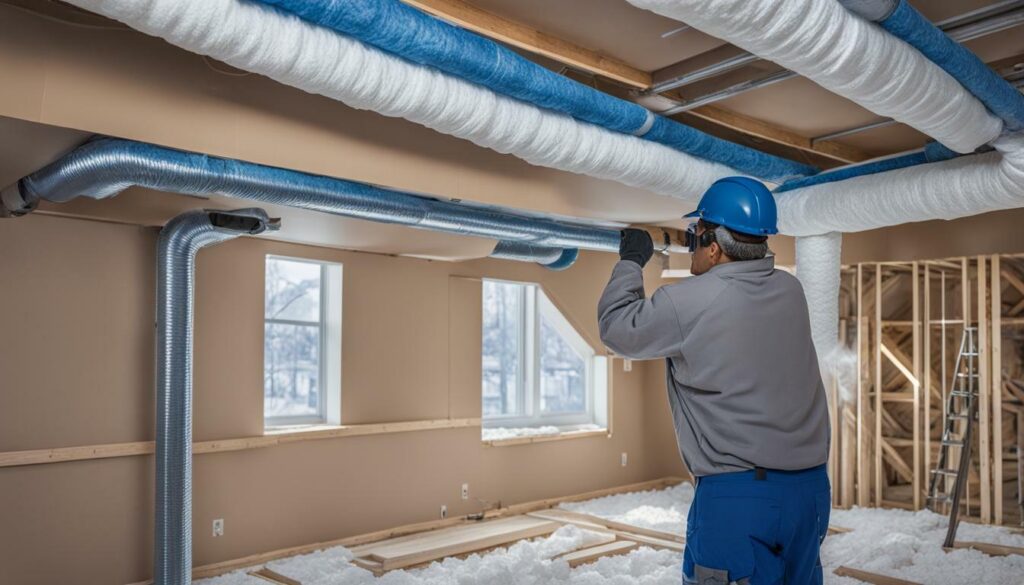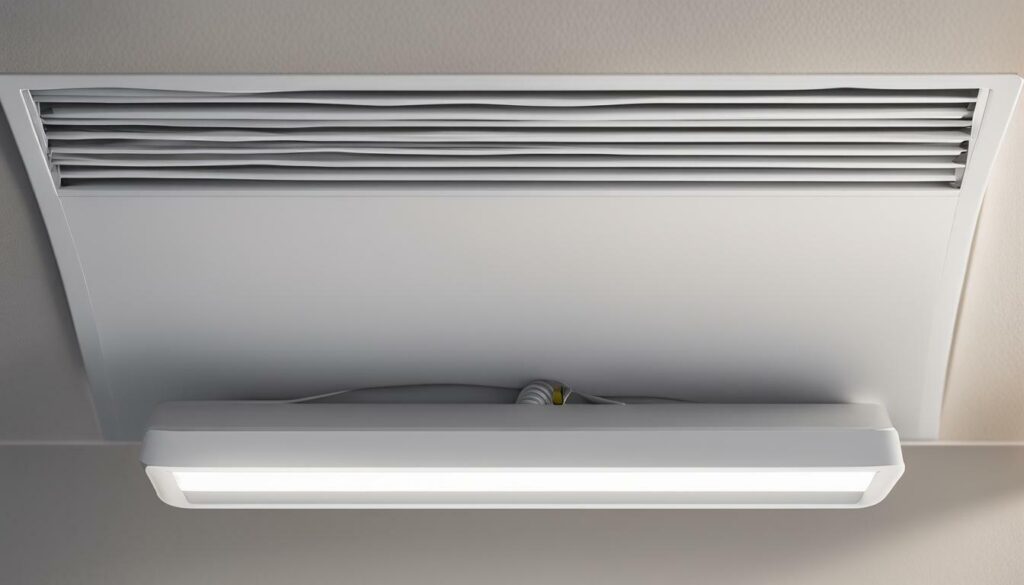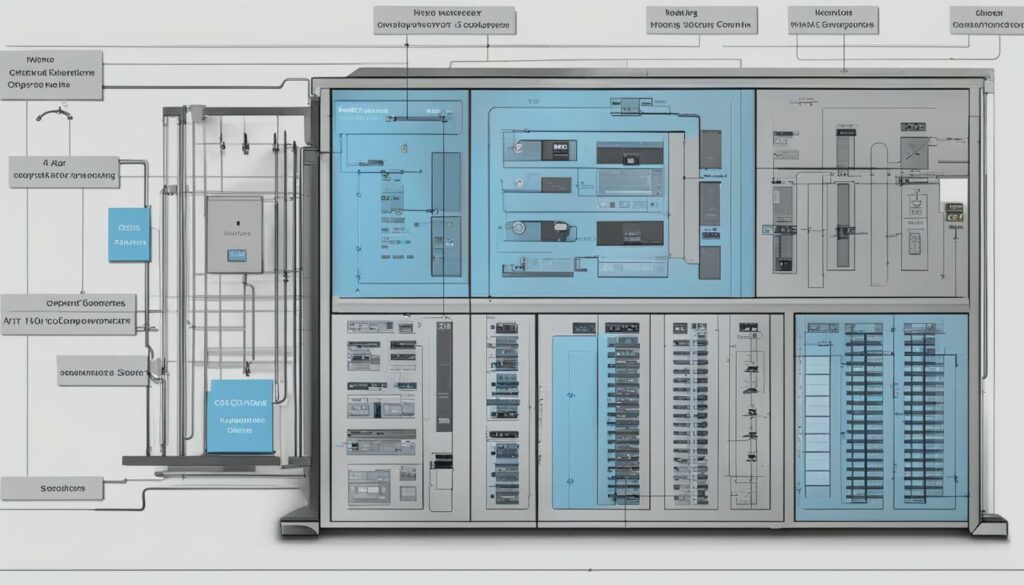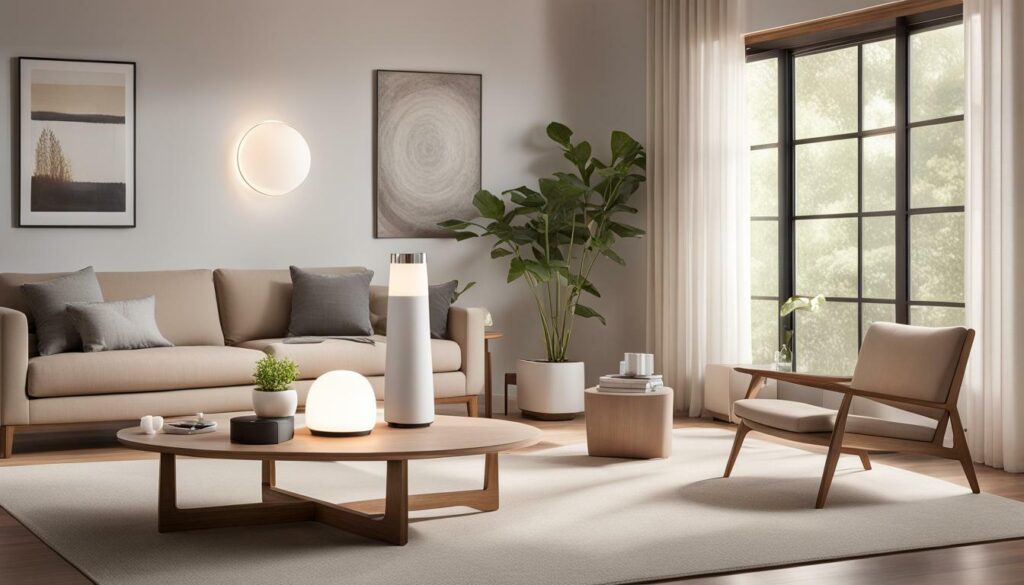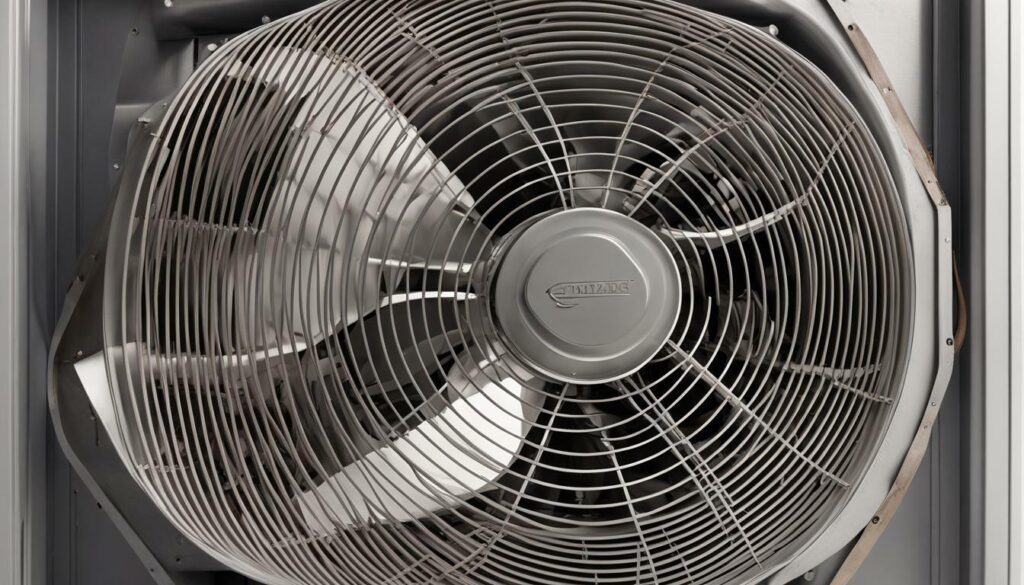When it comes to home insulation, foam insulation is a popular option due to its high effectiveness in reducing energy costs and improving indoor air quality. However, it’s essential to understand that foam insulation can impact your home’s HVAC system.
Without proper consideration of the HVAC requirements for foam insulation, you risk compromising its effectiveness and potentially causing lasting damage to your HVAC system. Therefore, it’s crucial to understand the key HVAC specifications that need to be considered when installing foam insulation in your home.
Key Takeaways:
- Foam insulation can impact your home’s HVAC system
- Understanding HVAC requirements for foam insulation is crucial to optimize energy efficiency and indoor air quality
- Failure to consider HVAC specifications during foam insulation installation can lead to lasting damage to your system
Choosing the Right HVAC System for Foam Insulation
When it comes to optimal energy efficiency and indoor air quality, selecting the right HVAC system for your foam insulation is crucial. An energy-efficient HVAC system can effectively complement foam insulation, resulting in lower energy costs and improved air quality. So, what are the characteristics of an optimal HVAC system for foam insulation?
First and foremost, it is important to consider the size of your home and the heating and cooling requirements. A properly sized HVAC system will ensure efficient and effective temperature regulation, reducing energy waste and costs.
Another factor to consider is the Energy Efficiency Ratio (EER) and Seasonal Energy Efficiency Ratio (SEER) ratings of the system. The higher the ratings, the more energy-efficient the system, making it a great complement to foam insulation.
When selecting an HVAC system for foam insulation, it is also important to consider the type of insulation. For example, spray foam insulation requires a system with higher air flow rates to prevent any moisture buildup. On the other hand, rigid foam insulation requires a system with lower air flow rates.


Overall, an energy-efficient HVAC system that complements foam insulation can result in significant savings and improved indoor air quality. Consulting with an HVAC professional is always recommended to ensure the optimal system selection and to ensure your home is as energy-efficient as possible.
Key HVAC Guidelines for Foam Insulation
When it comes to installing foam insulation in your home, there are certain HVAC guidelines that should be followed to ensure optimal performance and energy efficiency. By adhering to these best practices, you can not only save money on energy costs but also improve the quality of your indoor air. Here are some of the key HVAC guidelines to keep in mind:
- Proper sizing: Make sure your HVAC system is appropriately sized for your home’s heating and cooling needs. An improperly sized system can lead to wasted energy and decreased efficiency.
- Ductwork design: Proper ductwork design is crucial for optimal performance. Leaky or poorly-designed ducts can lead to loss of heated or cooled air, resulting in decreased efficiency and wasted energy.
- Ventilation requirements: Proper ventilation is important for maintaining good indoor air quality. Properly designed ventilation systems can help prevent moisture buildup and reduce the risk of indoor pollutants.
By following these HVAC guidelines and best practices, you can get the most out of your foam insulation and HVAC system. It is recommended to consult with an HVAC professional to ensure that your insulation and HVAC systems are properly integrated and working together to achieve maximum energy efficiency and indoor comfort.
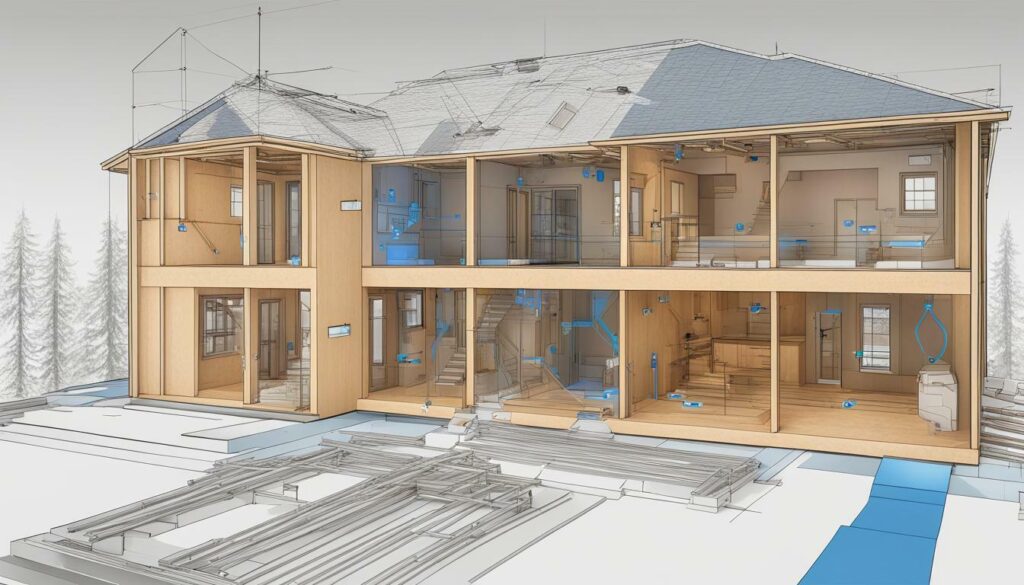

“Properly designed ventilation systems can help prevent moisture buildup and reduce the risk of indoor pollutants.”
Achieving HVAC Performance with Foam Insulation
Combining foam insulation with an appropriate HVAC system can significantly improve energy efficiency and indoor comfort. By reducing energy consumption and enhancing air distribution, achieving optimal HVAC performance is possible. With foam insulation, you can achieve just that.
The reduced energy consumption can lead to lower electricity bills, making your home more sustainable and environmentally friendly. The enhanced air distribution ensures that the air in your home is evenly distributed, reducing the need for temperature adjustments and creating a more comfortable living environment.
Another way foam insulation can improve HVAC performance is through its ability to reduce air leaks and drafts. With proper installation, foam insulation can seal gaps and cracks that may have been previously allowing unwanted air to enter or escape your home. This can reduce strain on your HVAC system and ensure that the air is being circulated as intended.
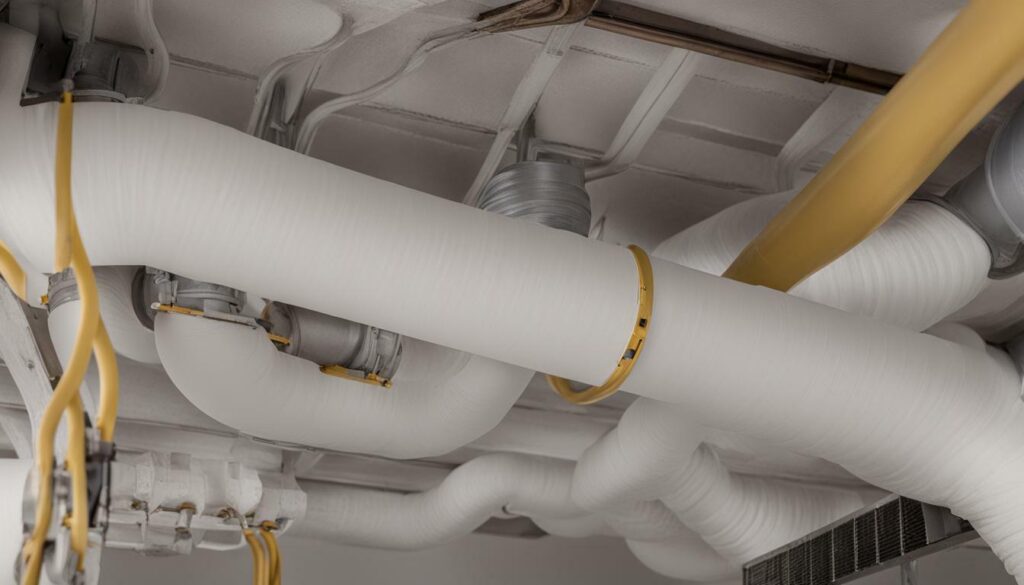

Finally, foam insulation can also help reduce noise levels caused by your HVAC system. By providing an additional layer of insulation, outside noise can be minimized, creating a quieter and more peaceful indoor environment.
By combining the benefits of foam insulation with an appropriate HVAC system, you can optimize your home’s energy efficiency and indoor comfort. Achieving HVAC performance with foam insulation is a smart choice for anyone looking to save money on their energy bills and improve their quality of life.
HVAC Considerations for Foam Insulation Installation
When it comes to installing foam insulation alongside HVAC systems, there are several considerations you should take into account to ensure compatibility and maximize the benefits of foam insulation.
Air sealing: Proper air sealing is critical in preventing air leakage that can compromise the effectiveness of both the insulation and the HVAC system. This is especially important in older homes that may have air leaks in the walls, ceilings, and floors. A professional HVAC contractor can perform a blower door test to identify where these leaks are and provide solutions to address them.
Moisture control: Moisture can also pose a problem for both foam insulation and HVAC systems. When installing foam insulation, it’s important to ensure that moisture is not trapped inside the walls, which can lead to mold growth and potentially compromise indoor air quality. Additionally, moisture can damage HVAC equipment, so proper ventilation and dehumidification are critical to maintaining HVAC performance.
Proper ventilation: Ventilation is essential for maintaining good indoor air quality, and it’s important to consider how foam insulation may impact your home’s ventilation needs. HVAC contractors can provide guidance on proper ventilation solutions to ensure that your home’s air exchange rate is maintained at safe levels.
By taking these HVAC considerations into account when installing foam insulation, you can ensure that your home benefits from optimal energy efficiency and indoor air quality.
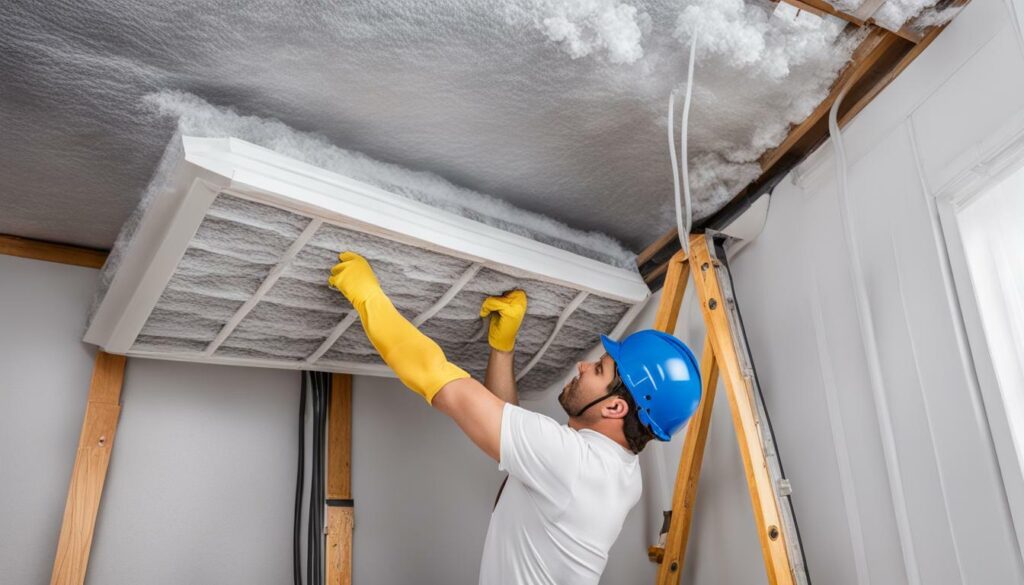

Understanding Foam Insulation Types and HVAC Compatibility
When it comes to selecting foam insulation, there are several types to choose from, including spray foam and rigid foam. Each type has different strengths and weaknesses that should be considered when deciding which one is right for your home.
One important factor to consider is the R-value, which measures the insulation’s ability to resist heat flow. The higher the R-value, the better the insulation’s performance will be. It’s also important to consider the installation method, as well as any potential challenges that may arise during the installation process.
| Insulation Type | R-Value per inch | Installation Method | Challenges |
|---|---|---|---|
| Spray Foam | 3.5-7 | Applied as a liquid, expands to fill cavities | May require protective gear during installation |
| Rigid Foam | 4-8 | Installed in sheets or panels | May require additional framing for support |
It’s also important to consider the compatibility of your chosen foam insulation with your HVAC system. Some types of foam insulation may not work well with certain types of HVAC systems, which could result in reduced energy efficiency and indoor air quality.
Consulting with an HVAC professional can help ensure that you select the right foam insulation for your specific HVAC system and that it is installed properly to maximize energy efficiency and indoor air quality.
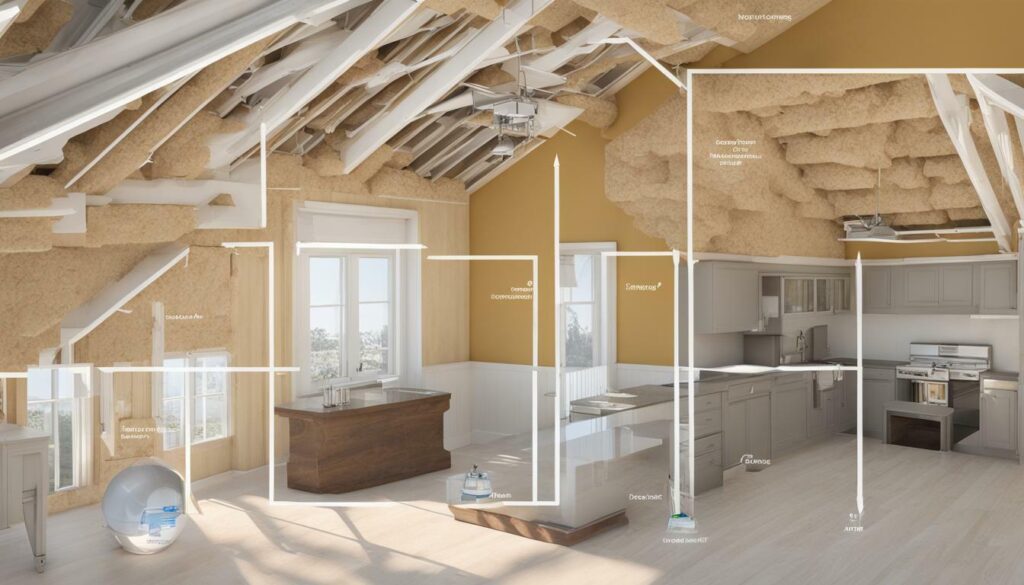

“By selecting the right type of foam insulation and ensuring compatibility with your HVAC system, you can maximize your home’s energy efficiency and indoor air quality.”
Maintaining HVAC Efficiency with Foam Insulation
Achieving optimal HVAC performance with foam insulation requires ongoing maintenance and care. Regular inspections and filter replacements are necessary to ensure the continued efficiency of both the insulation and the HVAC system.
It’s important to address any issues that may arise promptly to avoid compromising the system’s performance and energy efficiency. This includes detecting and repairing any air leaks that may occur around vents, ducts, or other areas where the HVAC system connects to the foam insulation.
Additionally, maintaining proper ventilation is crucial for ensuring healthy indoor air quality. This involves ensuring your HVAC system is working at its optimal capacity and that air filters are changed regularly.
When it comes to maintaining HVAC efficiency with foam insulation, it’s important to consult with a professional to ensure proper care and upkeep. They can provide guidance and recommendations for addressing any issues that may arise and ensuring that your system is functioning at optimal capacity.
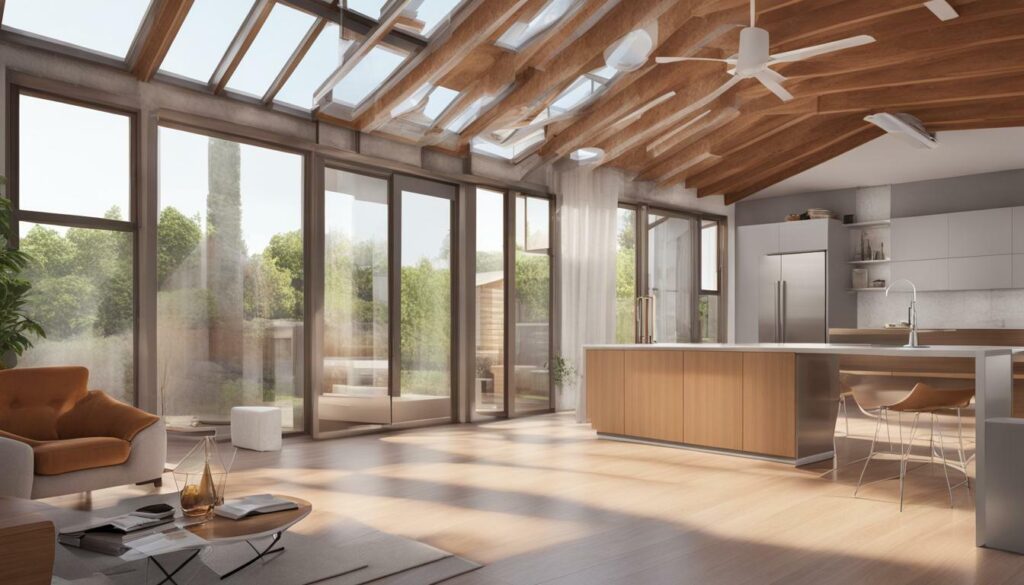

By following the proper maintenance guidelines for your HVAC system and foam insulation, you can ensure optimal energy efficiency and indoor air quality in your home. This will not only help to reduce your energy costs but also improve your overall comfort and well-being.
Consulting an HVAC Professional for Foam Insulation Projects
While DIY foam insulation projects are becoming more popular, it’s important to recognize when it’s time to bring in a professional. When it comes to ensuring the compatibility of foam insulation and your HVAC system, your best bet is to consult with an HVAC professional.
These professionals have the knowledge and expertise to assess your HVAC requirements for foam insulation and recommend the best course of action. They can help you determine the optimal insulation and system combination, ensuring that your home is both energy-efficient and comfortable.
An HVAC professional can also ensure that the installation of your foam insulation is done correctly, avoiding any potential damage to your HVAC system. They can identify any potential issues before they become costly problems, saving you time, money, and headaches down the road.
Additionally, an HVAC professional can provide ongoing maintenance and care for both your foam insulation and HVAC system, maximizing their energy efficiency and extending their lifespan.
Overall, consulting with an HVAC professional for foam insulation projects is a wise investment in the long-term energy efficiency and indoor air quality of your home. Don’t hesitate to reach out to a professional when planning your insulation and HVAC system upgrades.
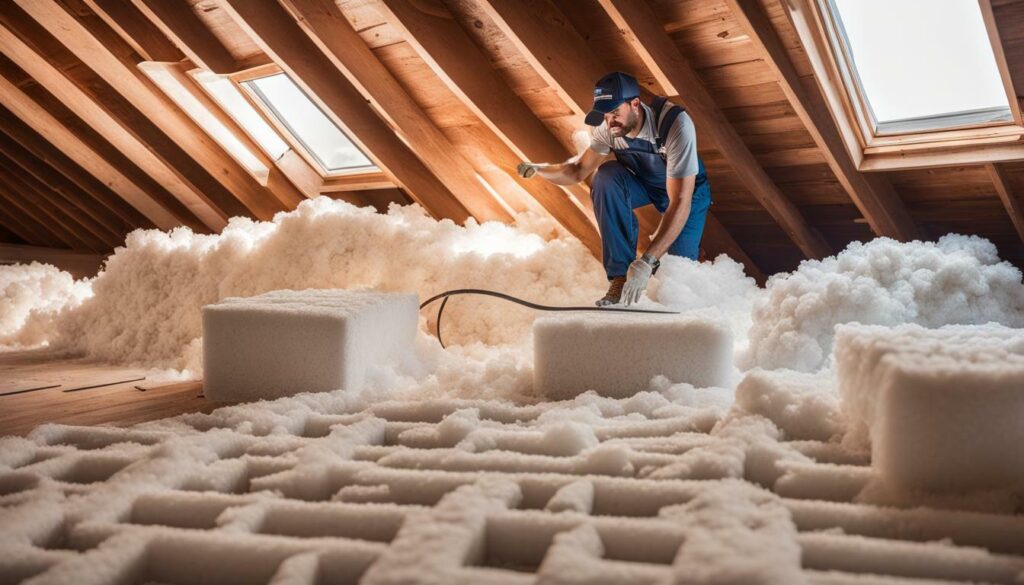

Exploring the Benefits of HVAC and Foam Insulation Integration
If you’re looking to optimize your home’s energy efficiency and indoor air quality, integrating your HVAC system with foam insulation can be a game-changer. By doing so, you can achieve a number of benefits that will not only make your home more comfortable but also save you money in the long run.
Reduced Energy Costs
One of the primary benefits of integrating an energy-efficient HVAC system with foam insulation is that it can significantly reduce your energy costs. By creating an airtight seal that prevents heat from escaping or entering your home, foam insulation can reduce the workload on your HVAC system. This means that your HVAC system won’t have to work as hard to maintain a comfortable indoor temperature, resulting in lower energy bills each month.
Improved Indoor Air Quality
Another key benefit of integrating HVAC and foam insulation is that it can lead to improved indoor air quality. This is because foam insulation can help prevent drafts and air leaks which can transport allergens, pollutants, and other harmful substances into your home. By using the right insulation materials and ensuring proper installation, you can create a healthy, clean, and comfortable indoor living environment.
Enhanced Comfort
Integrating your HVAC system with foam insulation can also greatly enhance your home’s comfort. By reducing drafts and air leaks, you can maintain a more consistent temperature throughout your home. This means that you won’t have to deal with hot or cold spots, and you’ll be able to enjoy a more comfortable living environment, no matter the season.
When it comes to achieving optimal energy efficiency and indoor air quality, integrating your HVAC system with foam insulation is a smart choice. By following best practices and seeking the advice of an HVAC professional, you can select the right insulation materials and HVAC system to achieve maximum benefits and savings. The result? A comfortable, healthy, and sustainable home environment for you and your loved ones.


Conclusion
Congratulations! You’re now equipped with the knowledge and guidelines needed to make informed decisions about HVAC requirements for foam insulation. By understanding the importance of HVAC compatibility, choosing the right system, and following best practices, you can optimize energy efficiency and indoor air quality in your home.
Remember to consider the specific HVAC guidelines and requirements when installing foam insulation alongside your system, and don’t forget to prioritize regular maintenance and care to maintain efficiency. If you’re feeling uncertain about any step of the process, don’t hesitate to consult with an HVAC professional. They can provide valuable insight into assessing compatibility, selecting the optimal insulation and system combination, and ensuring proper installation.
By integrating your HVAC and foam insulation, you can experience numerous benefits, including reduced energy costs, improved indoor air quality, enhanced comfort, and a more sustainable living environment. Thank you for taking the time to learn about this essential topic, and we wish you the best of luck as you optimize your home’s energy efficiency and indoor air quality!
FAQ
Q: Are there specific HVAC requirements for foam insulation?
A: Yes, it is important to understand the HVAC requirements when installing foam insulation in your home. These requirements ensure optimal energy efficiency and indoor air quality.
Q: How do I choose the right HVAC system for foam insulation?
A: When selecting an HVAC system for foam insulation, it is important to choose one that is energy-efficient and compatible with foam insulation. Consider the characteristics of the system and its compatibility with foam insulation.
Q: What are the key HVAC guidelines for foam insulation?
A: Proper sizing, ductwork design, and ventilation requirements are some of the key guidelines that should be followed when it comes to HVAC systems and foam insulation to ensure optimal performance and energy efficiency.
Q: How can foam insulation contribute to HVAC performance?
A: Foam insulation can improve HVAC performance by reducing energy consumption, enhancing air distribution, and improving indoor comfort. Combining foam insulation with the right HVAC system can lead to these benefits.
Q: What considerations are there for foam insulation installation alongside HVAC systems?
A: When installing foam insulation alongside HVAC systems, it is important to consider air sealing, moisture control, and preventing air leakage to ensure compatibility and maximize the benefits of foam insulation.
Q: Are there different types of foam insulation and how do they relate to HVAC compatibility?
A: There are different types of foam insulation, such as spray foam and rigid foam. Their compatibility with HVAC systems depends on factors like R-value, installation methods, and potential challenges that need to be considered when selecting the right foam insulation for your HVAC setup.
Q: How can I maintain HVAC efficiency with foam insulation?
A: Ongoing maintenance and care are required to ensure the continued efficiency of foam insulation and the HVAC system. Regular inspections, filter replacement, and addressing any issues that may arise are recommended to maximize energy efficiency and indoor air quality.
Q: Should I consult an HVAC professional for foam insulation projects?
A: Yes, it is important to consult with an HVAC professional when planning and executing foam insulation projects. They have the expertise to assess HVAC compatibility, determine the optimal insulation and system combination, and ensure proper installation for desired energy efficiency and indoor air quality goals.
Q: What are the benefits of integrating HVAC and foam insulation?
A: Integrating HVAC systems and foam insulation can lead to reduced energy costs, improved indoor air quality, enhanced comfort, and a more sustainable living environment. This synergy provides numerous benefits for homeowners.

